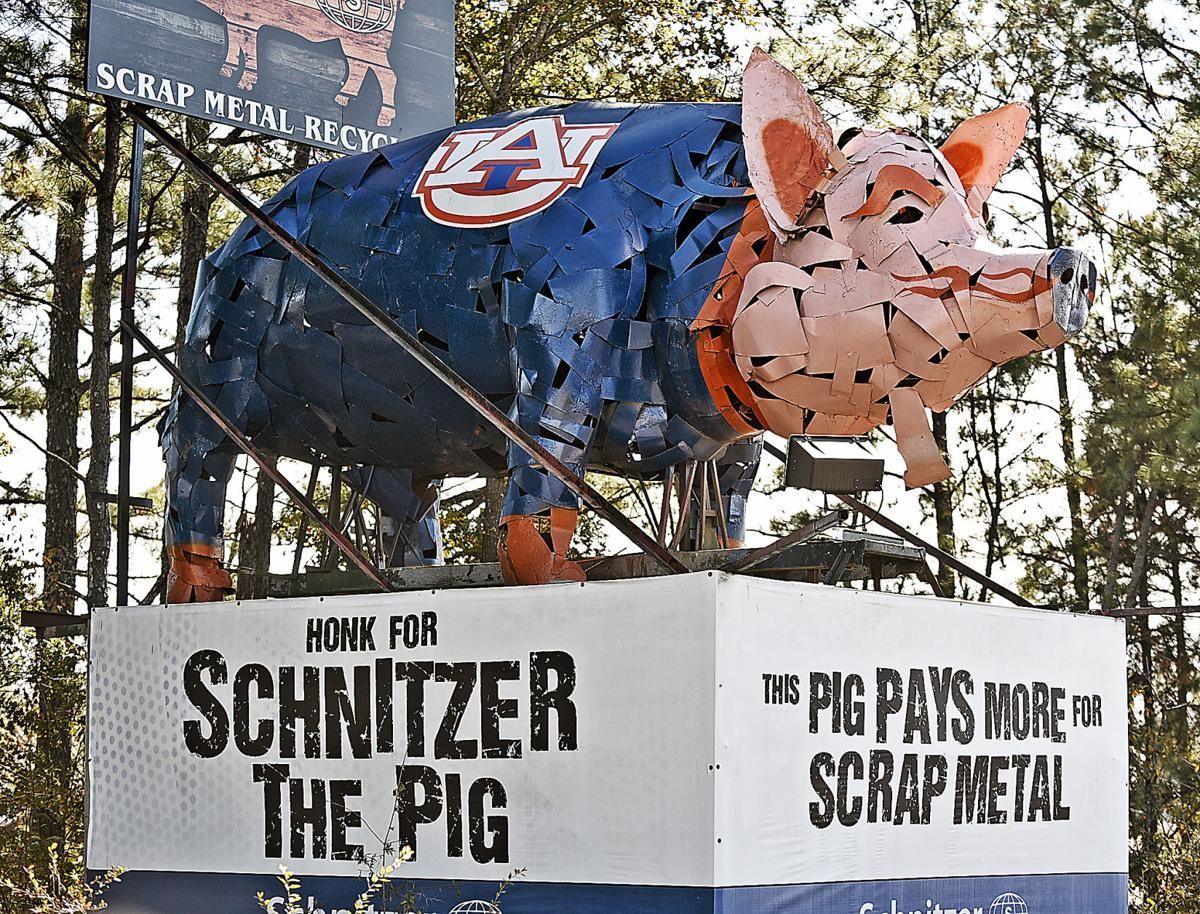World's Oldest Edible Ham, world record in Smithfield, Virginia
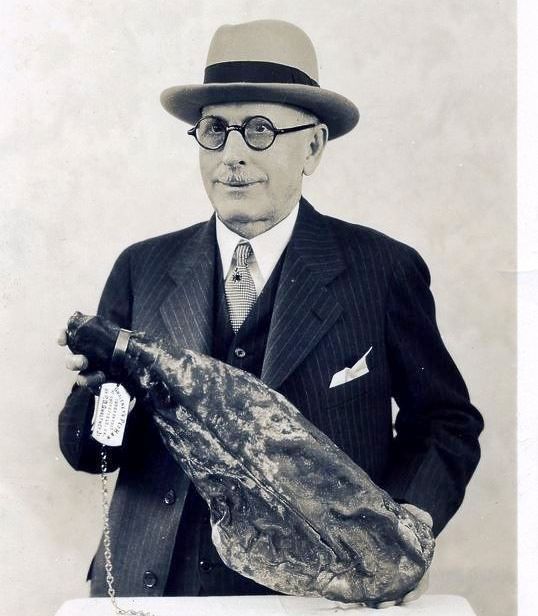
Smithfield, Virginia, United States--The World's Oldest Edible Ham is housed in the Isle of Wight County Museum, in Smithfield, Virginia; it occupies a climate-controlled display case with two other hams; the ham was first cured in 1902 by the P.D. Gwaltney Jr., and sets the world record for being the World's Oldest Edible Ham, according to the WORLD RECORD ACADEMY.

"One thing you might not immediately think of being synonymous with Virginia is the oldest ham in the world. And yet, here we are. Located in the small town of Smithfield, Virginia, travelers will find a nearly 120-year-old piece of pork with a wild and wacky history," the Only In Your State says.
"One of the places where you can learn all about that history is the Isle of Wight County Museum! And tucked away inside this museum is none other than the world’s oldest edible ham. This 120-year-old ham was cured in 1902 by the Gwaltney Foods meat company before being lost in storage for over two decades.
"Eventually, the ham was found by Pembroke D. Gwaltney Jr., who put a brass collar on the ham and paraded it around town as his pet! Microbiologists have claimed that the ham is still edible even after a century thanks to the dry curing process, which salts the meat and drains the blood. However, nobody is in a rush to get a taste."
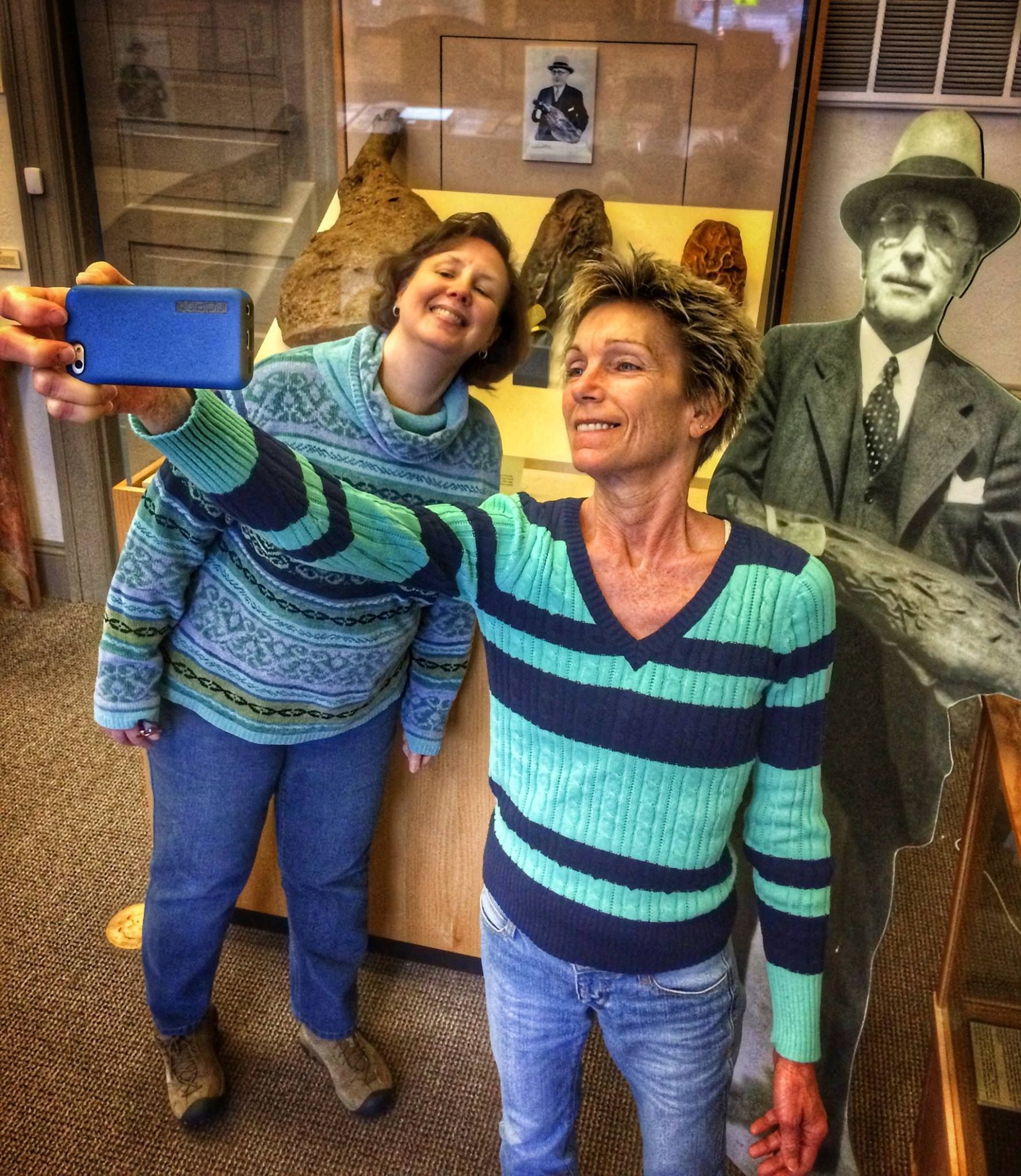
"The ham in the center is THE ham. (The one with his own Twitter account.) In 1902, one of P.D. Gwaltney Jr.'s cured hams was overlooked, and for 20 years, it hung from a rafter in a packing house," the Isle of Wright County Museum says.
"By 1924, the pet ham was kept in an iron safe which was opened daily for guests to view, and it was advertised as the world’s oldest Smithfield ham."
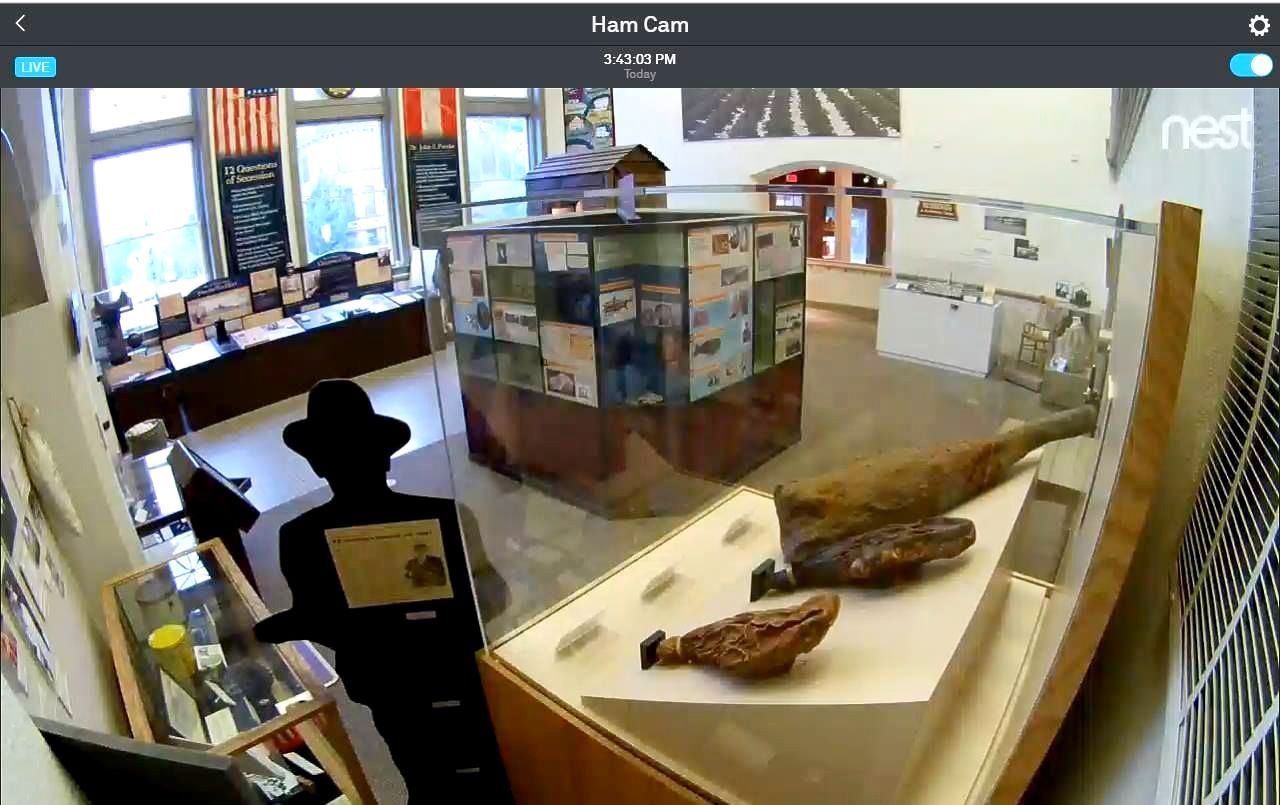
"The dry curing process used to create the ham involved salting the meat and draining the blood, which allows for a longer shelf life and a richer flavor," the Atlas Obscura says.
"Supposedly, microbiologists say the ham is technically still edible. However, it isn’t a delicacy anyone would enjoy pigging out on, as the taste and sensory experience of the cured ham may not appeal to modern palates. The appearance of the ham itself has garnered comparisons to dried leather and an expired human arm.
"The ham is housed in the Isle of Wight County Museum, which is also home to the world’s oldest peanut. It occupies a climate-controlled display case with two other hams, one of which is purportedly the largest ham in the world. A nonstop, live-streamed “ham cam” allows anyone to keep up to date with the preserved pork, as does the ham’s Twitter account."
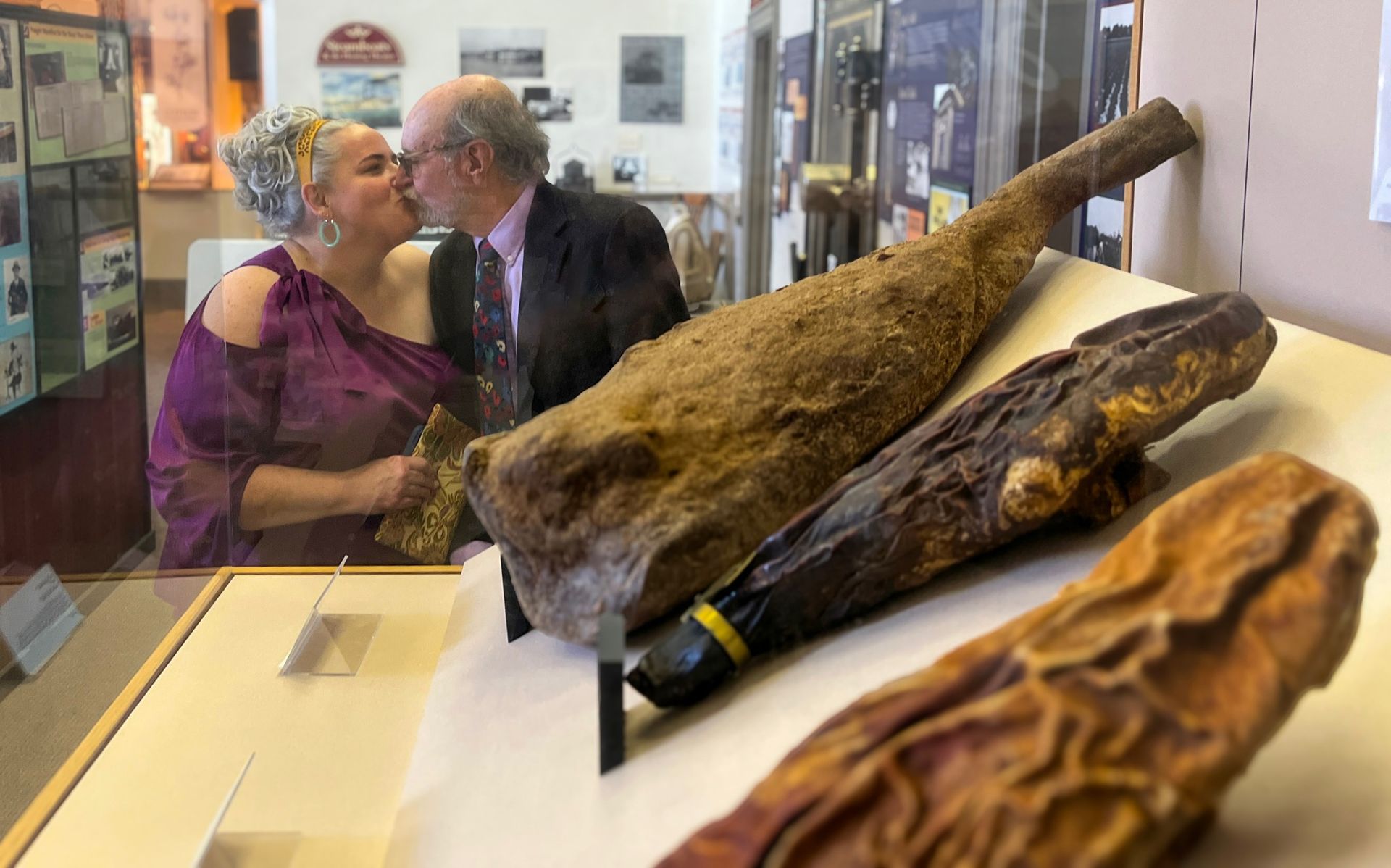
"Smithfield Foods, Inc., is a pork producer and food-processing company based in Smithfield, Virginia. It operates as a wholly-owned subsidiary of the Chinese-owned conglomerate WH Group. Founded in 1936 as the Smithfield Packing Company by Joseph W. Luter and his son, the company is the largest pig and pork producer in the world.
"In addition to owning over 500 farms in the US, Smithfield contracts with another 2,000 independent farms around the country to raise Smithfield's pigs. Outside the US, the company has facilities in Mexico, Poland, Romania, Germany, Slovakia and the United Kingdom. Globally the company employed 50,200 in 2016 and reported an annual revenue of $14 billion. Its 973,000-square-foot meat-processing plant in Tar Heel, North Carolina, was said in 2000 to be the world's largest, slaughtering 32,000 pigs a day.
"The company was able to grow as a result of its highly industrialized pig production, confining thousands of pigs in large barns known as concentrated animal feeding operations, and controlling the animals' development from conception to packing. As of 2006 Smithfield raised 15 million pigs a year and processed 27 million, producing over six billion pounds of pork and, in 2012, 4.7 billion gallons of manure. Killing 114,300 pigs a day, it was the top pig-slaughter operation in the United States in 2007; along with three other companies, it also slaughtered 56 percent of the cattle processed there until it sold its beef group in 2008. The company has sold its products under several brand names, including Cook's, Eckrich, Gwaltney, John Morrell, Krakus, and Smithfield." (Wikipedia)
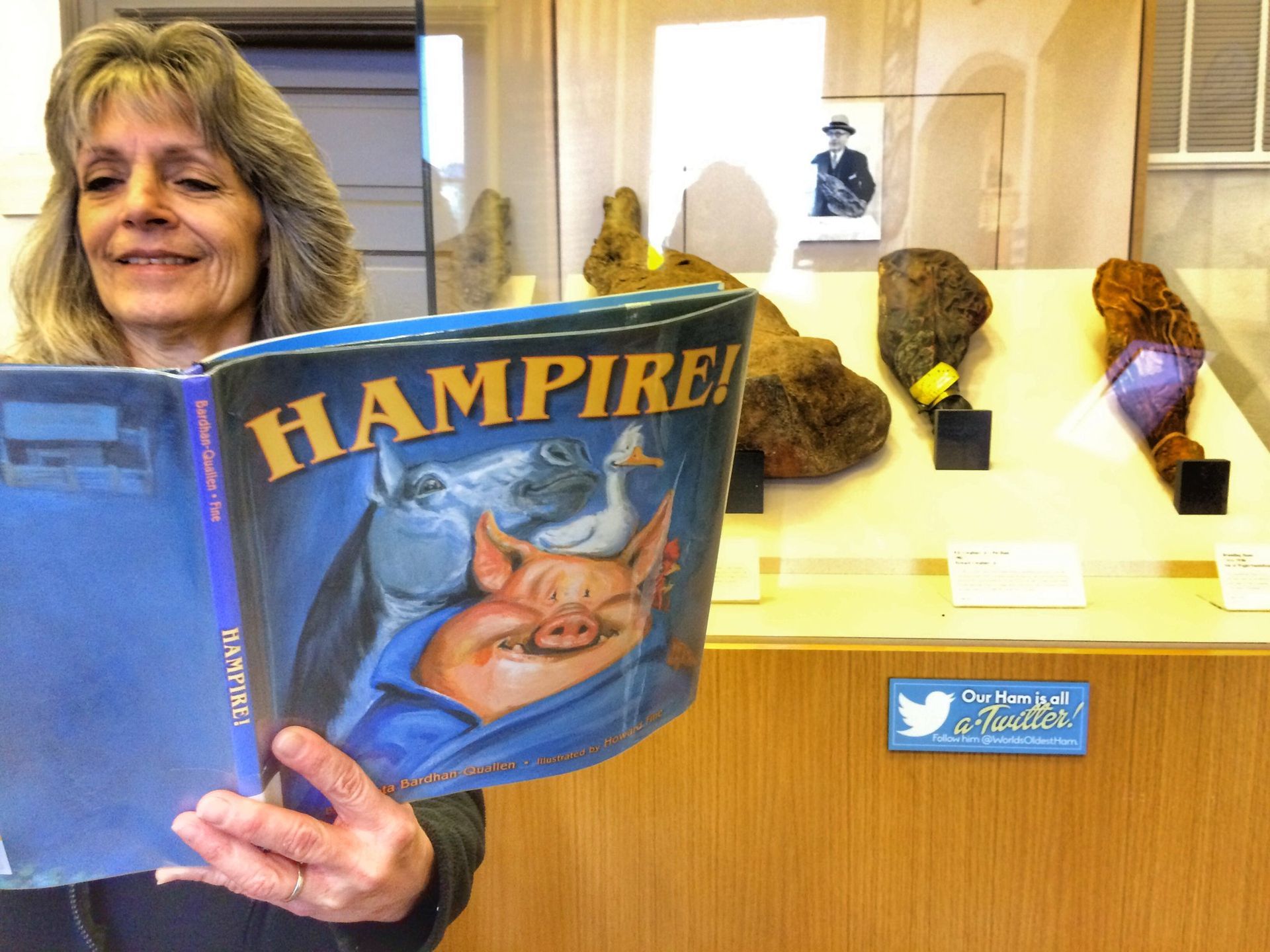
"Ham, the aptly named ham, is now the world's oldest cured ham. In the summer of 2014, the Isle of Wight County Museum in Smithfield, Virginia celebrated Ham's 112th birthday. The ham was first cured in 1902 by the P.D. Gwaltney Jr., who owned several meat packing plants in Smithfield," the CBC says.
"The ham is on display at the Isle of Wight County Museum, but it can be viewed from afar via a live web cam. The ham is now 113 years old.
"Every summer the museum holds a photo contest with the ham. The Pan Ham contest encourages fans of the ham to take a picture of themselves on their summer travels while holding a picture of P.D. Gwaltney Jr and his ham."
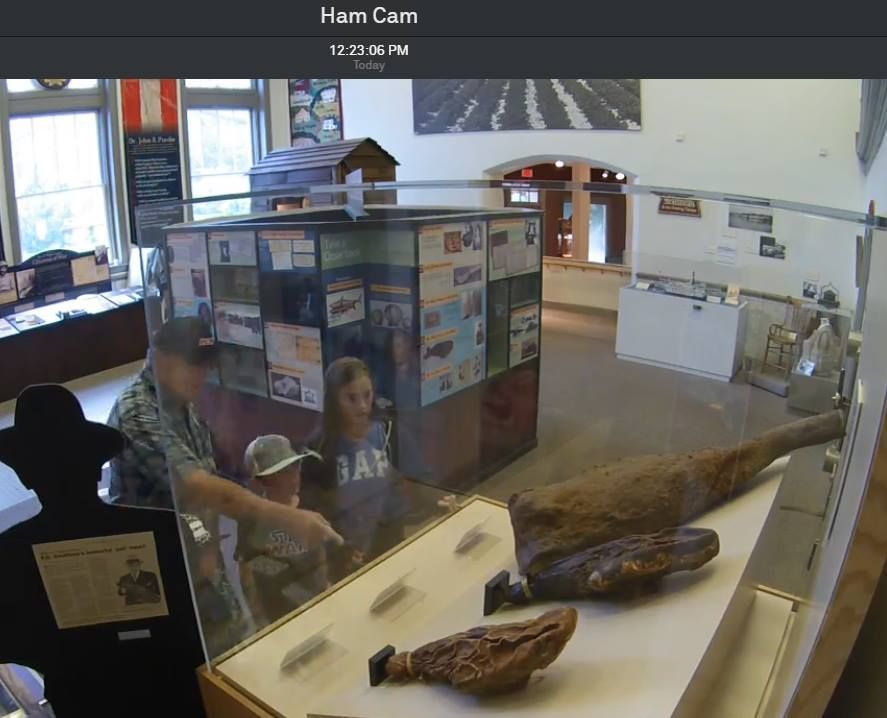
"On April 19, the Isle of Wight County Museum hosted a “hamwarming" (think housewarming party but for a ham). Smithfield Foods has donated the last “Genuine Smithfield Ham” to the museum," the WTKR says.
"It will be on display alongside the World’s Oldest Ham, the World’s Largest Ham, and a 1930s-branded ham."
"Smithfield Foods has stopped producing the brand-name Genuine Smithfield Hams that have become synonymous with the town of Smithfield."
"Gwaltney's pet ham is also sometimes called the "World's Oldest Edible Ham," but the "edible" claim could only be proven by ruining the famous ham – and likely causing some stomach ailments in the process. In other words, scientifically speaking, it should be edible but no one knows for sure," the southernthing.com says.
"Interestingly, the label "Smithfield ham" does not necessarily refer to ham made by Smithfield Foods, which later merged with Gwaltney's processing company. Instead, any ham using the label it must follow laws dictated by the Commonwealth of Virginia, as set out in a 1926 statute and updated through the years. It states that Smithfield hams are those cured, treated, smoked and processed in the town of Smithfield."
"Also on display in the fun museum: The World's Oldest Peanut, which was picked in 1890 by Gwaltney's father, P.D. Gwaltney Sr., who was a peanut grower and prominent businessman. He wrote the date on the peanut shell and it's still visible."
Photos: Facebook/World's Oldest Ham
Related world records:
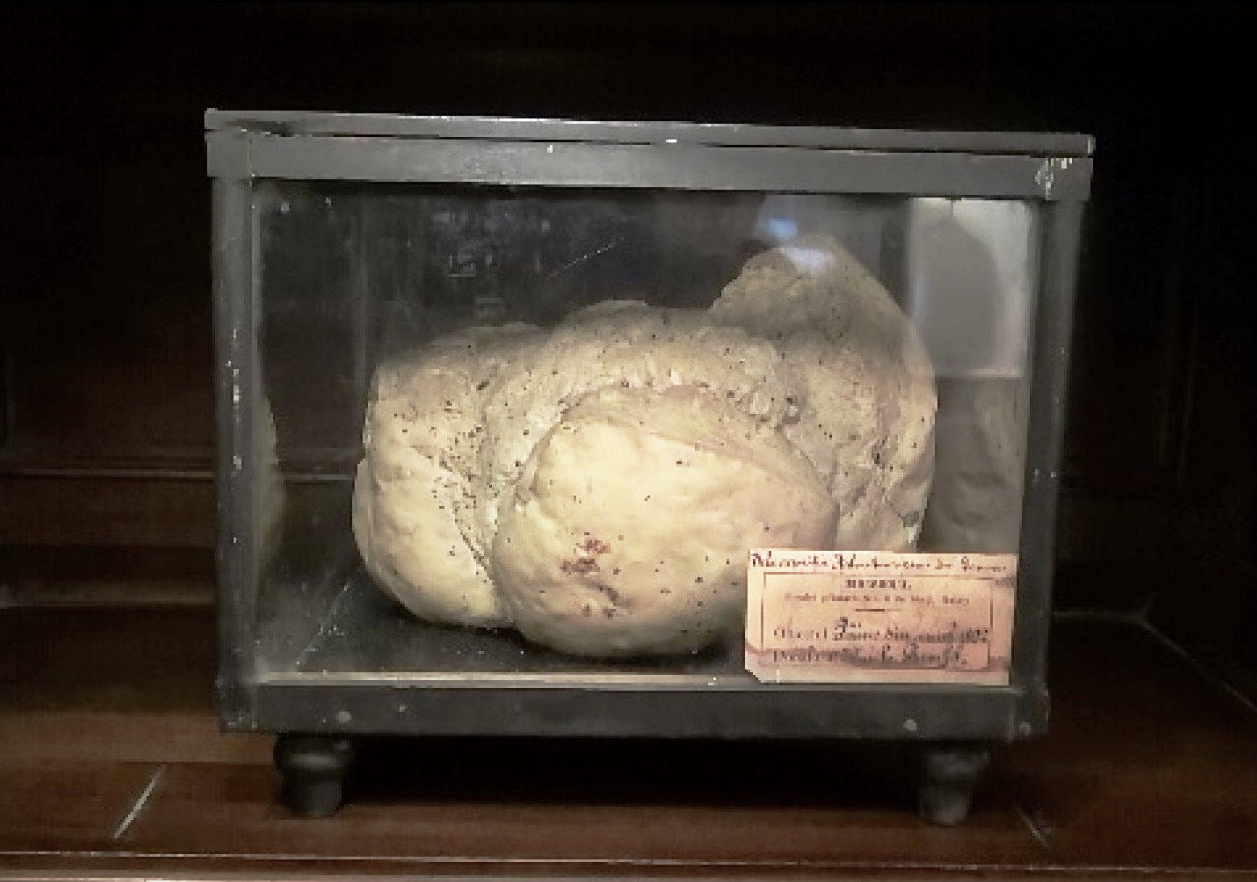
World's oldest bread, world record set in Galati, Romania



